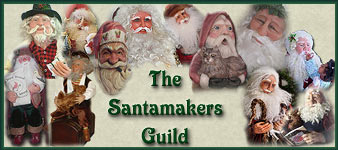As background for all this, let me start up the Wayback Machine and take you back in time about 15 years. This happened in Albuquerque. It was a lovely spring day, and I made the ill-considered decision to take my wife with me to an outdoors carving show on the University of New Mexico campus. There were a lot of excellent carvers there, but I only remember one. He was in his mid-thirties, I'd guess, and was a wonderful carver. We complemented his work, and I asked him what kind of knives he used. He snapped open a beat-up leather pouch on his belt and pulled out an old Buck Folding Hunter. The original 4-inch blade had been sharpened down to a little less than half that size. It was now an odd shape that I couldn't begin to describe. "This is it," he said. "This is the only knife I use. It does everything I need it to do." That was his magic knife. We'll come back to him a little later.
These are the first of my magical knives.They are called "Harley" knives. They are made and sold by Del Stubbs of Pinewood Forge. They start off life as a Frost's Pattern #122 from Sweden. Del takes them and regrinds the blade from a 20 degree angle down to a 12 degree angle. They are made specifically for Scandinavian Flat Plane carving in basswood and are named after Harley Refsal, probably the foremost practitioner of SFP carving on the North American Continent. For their purpose these knives are truly magical. They drift through basswood with hardly any drag at all. But don't use them to pry and don't use them on anything harder than butternut. Those edges will kink at the least excuse. I know! But for carving Uncle Ira up there, they are worth their weight in gold.
These are a couple of knives made by Carl Johnson. They are magical because they allow me to carve Celtic knots without a scroll saw. All I have to do is drill a 1/8" diameter hole, and I'm off to the races. They are not so magical for removing large amounts of wood, however. Sorry, Carl.
Here's another pair of Del Stubbs knives that I consider magical. These are his regular sloyd and his short sloyd. He also makes a straight sloyd, a skinny sloyd and an extra long sloyd. I wish he'd quit coming up with new knives. I already have a drawer with nothing but his knives in it. If he makes any more, I'm going to have to clean out another drawer for the overflow! These knives are sharp and pointy without being delicate. They are perfect for wood spirits and spoons.
Now here is my latest magical knife. It's made by Ralph E. Long and is called the WH-8. I was introduced to this knife by Don Mertz, the Woodbee Carver. After seeing the post where he used this knife alone to carve a very detailed pirate, I had to give it a try. I carved that Santa using only the Long knife. The blade is whisper thin. I measured 58-thousands of an inch thick at the handle and tapers to nothing at the edge and the point. If the Harley knives drift through basswood, this Long knife (I LOVE saying that!) falls through it. And like the Harley knives, don't twist, don't flick, don't pry! But the shape of the blade is what makes it magical. I could do things with this knife I didn't think were possible. It excells at getting into tight spots. Plus the curvature of the blade keeps the heel of the edge out of the way when you are using the point, and keeps the point out of the way when you are using the heel. A wonderful knife -- as long as you don't try to use it on maple.
Well, I promised you that we'd come back to that New Mexico carver with the Buck Folding Hunter, and here we are. Remember I said I'd made an ill-considered decision to bring my wife along to the carving show? Ever since that day, about every three weeks on average, she says to me, "Why do you need all these knives? Why can't you do like that guy in New Mexico and just use one knife?"
Within the answer to that question lies the point of this whole ramble. You can be a one-knife carver if all you do is one style of carving. If you want to do SFP and wood spirits and spoons and Welsh lovespoons and want to do them with the minimum amount of frustration, you need more than one knife. Because there is no one, magical, do-all knife.
So indulge yourselves. Go out and buy 20 or 30 knives. You'll feel better!
Until next time, let the chips fly!















